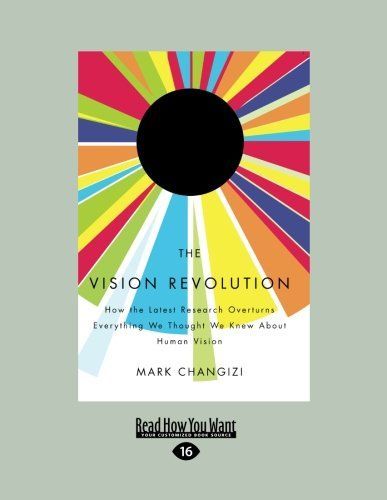
The Vision Revolution How the Latest Research Overturns Everything We Thought We Knew about Human Vision (Large Print 16pt)
A radically new perspective on human vision is emerging. Groundbreaking research by evolutionary scientist and neurobiologist Mark Changizi is driving a revolution in our understanding of human vision. In asking why we see the way we do, Changizi overturns existing beliefs and provides new answers to age-old questions. Why do our eyes face forward? While binocular vision was helpful to our primate ancestors, its importance for 3-D vision is exaggerated. Squirrels jump from branch to branch just fine with sideways-facing eyes and many athletes, including Hockey Hall of Famer Frank McGee, play with only one eye. HINT: We evolved in a highly leafy environment. Why do we see in color, when most other mammals do not? Its not because it helped our ancestors find ripe fruit. Our color vision has evolved to be extremely sensitive to specific sets of color changes. HINT: Primates with color vision, like us, are the only ones who have areas of bare skin. Why do we see optical illusions? Its not the result of glitches in our visual system. Optical illusions can be traced back to the same specific property of vision. HINT: We are able to catch a ball coming at us much more effectively than we should given the speed at which our brains process visual input. Why do we absorb information so readily by reading? Its not because weve evolved to read; evolutionarily, reading and writing are recent developments. HINT: Language is designed to exploit skills weve refined over tens of millions of years. In The Vision Revolution, Changizi details the conclusions of his innovative fieldwork and their mind-blowing implications for our understanding not just of human vision, but of the way we interact with the world in which we live.